When shopping for a mirrorless camera for beginners, it’s easy to be overwhelmed by choice.
The mirrorless market is incredibly competitive. I remember fretting constantly over wanting to make the best possible choice.
So how did I choose?
I compared sensor sizes, resolution, videography features, and battery life, among other things. Plus, I wanted to find a system that is beginner-friendly. Something that I would actually enjoy using. There are some standout cameras for the discerning shopper if you shop around.
Why Should You Trust Me?
For this post, I have done more than 25 hours of research and field-tested 5 cameras.
As a professional photographer, I’ve used almost every system on the market; Canon, Nikon, Fujifilm, Sony, Panasonic, and Olympus. I’ve dabbled in each one to find the best brand/features for my needs.
It has taken two decades of dabbling, but the time was well spent. I now have a strong grasp of the strengths and weaknesses of each brand, so I’d like to share what these models have to offer beginner photographers.
So let’s take a look at what you should consider when searching for your first mirrorless camera. Before we begin individual reviews, here is a summary of what I am recommending here.
Best Mirrorless Cameras for Beginners
Canon EOS M50
[amazon box=”B079Y45KTJ” template=”vertical”]
Sensor: APS-C, 22.3 mm x 14.9 mm | Mount: Canon EF-M | Resolution: 24.1 megapixels | Image stabilization: No | Video resolution: UHD 4K (3840 x 2160) up to 24 fps | LCD details: 1.04 M dot, vari-angle touchscreen |Kit lens options: Canon EF-M 15-45mm f3.5-6.3 IS STM or EF-M 55-200mm f4.5-6.3 IS STM lens | Weight: 387g | CIPA rating: Up to 235 shots per charge
The Canon EOS M50 has a large APS-C sensor (22.3 x 14.9mm) which promises great performance in low light conditions. It boasts 143 autofocus points which make great use of Canon’s Dual Pixel CMOS AF focusing technology. Images viewed through the electronic viewfinder (EVF) are bright and clear thanks to the 2.36M dot resolution.
Users can also compose and view images using the flexible 3-inch, 1.04M dot LCD touchscreen, however, there is no in-body image stabilization on this camera. Although bulkier in design compared to others on this list; at 387g the M50 actually weighs less than its competitors. As a DSLR user, I really like the bulkier ergonomics of this camera. It feels good to shoot with.
Olympus OM-D E-M10 Mark III
[amazon box=”B0751B835N” template=”vertical”]
Sensor: Micro 4/3rds, 17.3 mm x 13 mm | Mount: Micro 4/3rds | Resolution: 16 MP| Image stabilization: Yes–sensor stabilization | Video resolution: UHD 4K (3840 x 2160) up to 30 fps | LCD details: 1.04 M dot, tilting touchscreen | Kit lens option: M.Zuiko Digital ED 14-42mm f3.5-5.6 EZ lens | Weight: 453g | CIPA rating: Up to 330 shots per charge
Olympus covers every angle with the OM-D E-M10 Mark III. You get a 16-megapixel sensor with 5-axis in-body image stabilization (IBIS) to keep photographs sharp, even with hand movement or slower shutter speeds.
The 3-inch touchscreen tilts and the 4K video is excellent for cameras in this price range, recording up to 30 frames per second.
And with 121 autofocus points, significantly more than any other camera on this list, the OM-D E-M10 Mark III has superior focus tracking, allowing you to focus on your subject no matter where your composition place them within the frame.
Although aimed at beginners, the Olympus OM-D E-M10 Mark III will last well and carry you easily into the semi-pro territory.
Panasonic Lumix DMC-GX85
[amazon box=”B01DOKHSH0″ template=”vertical”]
Sensor: Micro 4/3rds, 17.3 mm x 13 mm | Mount: Micro 4/3rds | Resolution: 16 MP| Image stabilization: Yes–sensor stabilization (in the lens on some models). Works in tandem for Dual IS | Video resolution: UHD 4K (3840 x 2160) up to 30 fps | LCD details: 1.04 M dot, tilting touchscreen | Kit lens options: There are 27 in total, including the Panasonic Lumix G Vario 12-32mm f3.5-5.6 ASPH, or the Lumix G VARIO 45-150mm f4.0-5.6 ASPH lenses | Weight: 494g | CIPA Rating: Up to 290 shots per charge.
The Panasonic Lumix DMC-GX85 is packed full of features for its size.
The 16-megapixel micro 4/3rds sensor (17.3 mm x 13 mm) is larger than most compact cameras and performs well in low light. Combine that with a wide aperture lens, and you get a lovely shallow depth of field.
The Lumix GX85 has several advanced features, including the Dual Image Stabilization (IS) system. Like the Olympus OM-D E-M10 III, the LUMIX GX85 uses IBIS to produce sharper images. The system also works in tandem with Panasonic IS lenses for improved stabilization performance.
The 4K video includes live cropping, plus a continuous burst rate of up to 8 frames per second at full resolution.
It’s also worth noting the Lumix GX85 uses a rangefinder design, placing the electronic viewfinder (EVF) on the top left corner of the camera body instead of in the center (SLR design). Rangefinder cameras are particularly popular with those shooting street photography.
Panasonic Lumix DC-GX850
[amazon box=”B01N6KNQV1″ template=”vertical”]
Sensor: Micro 4/3rds, 17.3 mm x 13 mm | Mount: Micro 4/3rds | Resolution: 16 megapixels | Image stabilization: No | Video resolution: UHD 4K (3840 x 2160) up to 30 fps | LCD details: 1.04 M dot, rotating touchscreen | Kit lens option: Panasonic Lumix G Vario 12-32mm f3.5-5.6 ASPH lens | Weight: 363g | CIPA Rating: Up to 210 shots per charge
If you’re looking for great image quality housed inside a simple, refined design, the Panasonic Lumix DC-GX850 is the camera for you.
It includes 16 MP still image resolution and 4K video options but does not include Dual IS (lenses with IS still function normally). The GX850 also lacks an electronic viewfinder; photos and videos have to be composed using the rear LCD panel.
The 3-inch touchscreen LCD can, however, turn a full 180 degrees; ideal for 4K selfies or vlogging. Plus you can change the focus point after the shot has been taken, thanks to the Post Focus mode. It also offers 22 other creative filter effects.
The camera’s continuous burst rate is an acceptable 5 fps, and at a weight of just 363g (including battery and memory card), this is a great pocket mirrorless camera.
Panasonic Lumix G7
[amazon box=”B00X409PQS” template=”vertical”]
Sensor: Micro 4/3rds, 17.3 mm x 13 mm | Mount: Micro 4/3rds | Resolution: 16 megapixels | Image stabilization: No | Video resolution: UHD 4K (3840 x 2160) up to 30 fps | LCD details: 1.04 M dot, tilting touchscreen | Kit lens option: Panasonic Lumix G Vario 12-32mm f3.5-5.6 ASPH or LUMIX G VARIO 45-150mm f4.0-5.6 ASPH lenses | Weight: 408g | CIPA rating: Up to 210 shots per charge
Another mid-range model in the Panasonic lineup, the Lumix G7 is the best choice if you want both a 2.36 M dot electronic viewfinder and SLR design.
While slightly lighter than the GX85, the chunky, 408g body of the G7 offers a better grip over the thin rangefinder camera.
Like the GX85, the G7 also uses a 16 MP sensor, though it also lacks in-body image stabilization. The newer Lumix G85 and G9 models include stabilized sensors, but with that, the price goes up substantially.
Video shooters not only have 4K up to 30fps but also a port for an external microphone, if you want better audio quality over the built-in microphone.
Fujifilm X-T100
[amazon box=”B07D7BVHRT” template=”vertical”]
Sensor: Micro 4/3rds, 17.3 mm x 13 mm | Mount: Fuji X | Resolution: 24.2 megapixels | Image stabilization: No | Video resolution: UHD 4K (3840 x 2160) up to 15 fps, full HD (1920 x 1080) up to 60 fps | LCD details: 1.04 M dot, tilting touchscreen | Kit lens option: Fujifilm XC 15-45mm f3.5-5.6 OIS PZ, ir XC 50-230mm f4.5-6.7 OIS lens | Weight: 1.116kg | CIPA rating: Up to 430 shots per charge
The Fujifilm X-T100 is one of the most stylish and versatile mirrorless cameras on the market. It boasts a large APS-C sensor (23.5 x 15.7mm) and 24.2 MP of resolution. Plus photos can be composed using either the 2.36 M dot EVF, or the 1.04 M dot LCD screen.
While the X-T100 can record in 4K, frame rates are limited to 15 fps. Full HD (1920 x 1080), however, offers better results at up to 60 fps.
At 1.116kg, the X-T100 is one of the heavier models, but it’s still significantly lighter than an entry-level DSLR or a bridge camera.
A larger body also means a larger battery; at 430 shots per charge, the X-T100 has one of the best battery capacities for an entry-level mirrorless camera.
Sony Alpha a5100
[amazon box=”B00MHPAFAG” template=”vertical”]
Sensor: APS-C, 23.5 x 15.6mm | Mount: Sony E | Resolution: 24.3 megapixels | Image stabilization: No | Video resolution: Full HD (1920 x 1080) up to 60 fps | LCD details: 921.6 K dot, tilting touchscreen | Kit lens options: Sony E PZ 16-50mm f3.5-5.6 OSS, or Sony E 55-210mm f4.5-6.3 OSS lenses | Weight: 281g | CIPA rating: Up to 400 shots per charge
Sony’s entry-level APS-C (23.5 x 15.6mm) camera brings a 24.3 MP sensor to the fore, complete with 179 phase and 25 contrast detection focus points. Combined with Sony’s excellent autofocus technology, you can lock onto and track any subject with ease.
The a5100 is affordable and has a 3-inch, 921.6 K dot, tilting touchscreen with focus selection points. And weighing in at just 281g (including battery and single UHS-1 card), this is one of the lightest cameras on this list.
Video shooters may find Full HD (1920 x 1080) up to 60 fps limiting if you’re looking for 4K. But beginner vloggers will find that more than enough for YouTube and other platforms.
Canon EOS M100
[amazon box=”B074VQ7L1Y” template=”vertical”]
Sensor: APS-C, 22.2 x 14.8mm | Mount: Canon M | Resolution: 24.2 megapixels | Image stabilization: No | Video resolution: Full HD (1920 x 1080) up to 60 fps | LCD details: 1.04 M dot, tilting touchscreen | Kit lens options: Canon EF-M 15-45mm f3.5-6.3 IS STM, or Canon EF-M 55-200mm f4.5-6.3 IS STM lenses | Weight: 303g | CIPA rating: Up to 295 shots per charge (up to 410 in Eco-Mode)
Canon’s EOS M100 is an entry-level, mirrorless camera designed specifically for beginner photographers. If you’re a complete newbie to photography, the helpful Creative Assistant tool will guide you and explain precisely how specific settings affect your final image.
And with its 24.2 MP APS-C sensor (22.2 x 14.8mm) you get image quality that revivals higher-level DLSRs (so long as you choose the right lens).
And speaking of lenses… if you decide you want access to Canon’s extensive EF and EF-S collection, you can use the Canon EOS M to EF adapter, which is relatively inexpensive and opens up hundreds of lens choices.
Videographers should note, however, that the EOS M100 maxes out at Full HD (1920 x 1080) at up to 60 fps, which may not be enough if you’re looking for 4K resolution.
Sony Alpha a6000
[amazon box=”B00I8BICB2″ template=”vertical”]
Sensor: APS-C, 23.5 x 15.6mm | Mount: Sony E | Resolution: 24 megapixels | Image stabilization: No | Video resolution: Full HD (1920 x 1080) up to 60 fps | LCD details: 921.6 K dot, tilting screen | Kit lens options: Sony E PZ 16-50mm f3.5-5.6 OSS, or Sony E 55-210mm f4.5-6.3 OSS lenses | Weight: 344g | CIPA rating: Up to 360 shots per charge
Comparable in specs and only slightly more expensive than the a5100, the Sony Alpha a6000 is another great choice in our best mirrorless camera for beginners lineup.
While the sensor is the same size and resolution, the a6000 has a few advantages over its streamlined cousin.
For one, the Alpha a6000 has an EVF, while the a5100 relies on the LCD for composition. Plus, at up to 11 fps continuous burst, the a6000 is almost twice as fast as the a5100 (6 fps).
The a5100 is slightly lighter, has better battery life (400 vs 360 shots per charge), and uses a touch-responsive LCD screen. But if you need a bit more speed and prefer an EVF for viewing, the Alpha a6000 is the better choice.
Olympus OM-D E-M5 Mark II
[amazon box=”B00S6DBM2S” template=”vertical”]
Sensor: Micro 4/3rds, 17.3 mm x 13 mm | Mount: Micro 4/3rds | Resolution: 16 megapixels | Image stabilization: Yes–sensor stabilization | Video resolution: Full HD (1920 x 1080) up to 60 fps | LCD details: 1.04 M dot, tilting touchscreen | Kit lens option: M.Zuiko Digital ED 12-40mm f2.8 Pro, or M.Zuiko Digital ED 14-150mm f4.0-5.6 II lenses | Weight: 467g | CIPA rating: Up to 310 shots per charge
The Olympus OM-D E-M5 Mark II may be at the pricier end of the budget scale but this is the best mirrorless camera for beginners looking to shoot outdoors. The dust and moisture-resistant outer shell keeps rain and dirt from damaging your camera on the inside.
The OM-D E-M5 Mark II uses 5-axis image stabilization to keep images sharp while shooting handheld at low shutter speeds. Plus it has built-in Wi-Fi, great for sharing shots with family and friends.
The 16.1 MP Micro 4/3rds sensor (17.3 x 13mm) is smaller and lower resolution compared to the APS-C cameras here, but as long as you’re not shooting in low light or expecting large physical prints, there should be more than enough resolution for your needs.
How to Choose the Best Mirrorless Camera for Beginners
Even with the list of specs for each camera, there is still a bewildering range of options to choose from. To help you choose, here are a few key specifications you might wish to consider…
LCD Screen vs. Electronic Viewfinder (EVF)
If you’re upgrading from a smartphone or compact camera, you’ll be used to composing photos on an LCD screen. No doubt you’ll also be familiar with the challenges of seeing that screen clearly in strong sunshine. Many mirrorless cameras have an electronic viewfinder (EVF) too, a tool I think is invaluable. Not only can you compose your pictures using the EVF, but you can see any exposure changes you make in real-time. And don’t forget you can also playback your pictures through the EVF after you’ve taken them.
An electronic viewfinder gets a direct electronic feed from the camera’s sensor (rather than through a mirror system in DSLR)
I personally wouldn’t buy a camera without a viewfinder, but it may be a consideration if you’re on a really tight budget.
Another consideration is whether you go for a fixed LCD screen, one that tilts, or one that is fully articulated. If you like shooting pictures from unusual angles (very high up or low down for instance) an LCD screen that can vary its angle can be immensely helpful.
Sensor Size Is Important
Naturally, you’ll need a large sensor for a camera with interchangeable lenses. Sure, you can pay a hefty price for a large full-frame mirrorless, but as a beginner, you would better be spending that money on quality lenses.
Compact cameras use 1-inch sensors (usually 15.86 x 8.80mm) or smaller. Micro 4/3rds and APS-C are the best choices here as they are fairly large without the need for large lenses.
Camera Weight and Form Factor
Unlike DSLR cameras, mirrorless cameras come in several different shapes and sizes. You may like the chunky form of a DSLR. Or perhaps you would prefer something more compact and retro-looking? The choice is yours!
Do you need the camera to be portable? If so, the weight will be an important factor. If the camera is too heavy, you won’t shoot with it very often. So try to stick to 600g weight or below, including a kit lens.
Is the Camera Price Right?
As you are new to the mirrorless market, we don’t want to break the bank on a new camera.
Thankfully there are dozens of affordable options for the beginner photographer. And if you can’t buy brand new, why not check out manufacturer sales, body-only, refurbished, or used options
How Long Is the Battery Life?
The EVF and LCD screens on mirrorless cameras make them more power-hungry than DSLRs. This means the battery life varies from model to model.
If you spend long periods away from power sources, this is a key consideration. Some mirrorless cameras now offer USB charging from power banks or car chargers, which can be invaluable.
Image Stabilization (IS)
IS is rapidly becoming the norm in mirrorless cameras, but not all manufacturers tackle it in the same way. Some include stabilization in the body, while others offer it in the lenses. My favorite is the Panasonic dual image stabilization which coordinates IS in the lens and body so you get a double benefit. Definitely, something to consider if you often shoot in dark conditions.
Connectivity
If you like to share pictures on social media on the go, Wi-Fi or Bluetooth connectivity is essential. Some models do this better than others–I found the Canon to be particularly user-friendly here.
Don’t Dismiss the Kit Lens
If you’re just starting out in photography it’s always a good idea to buy your chosen camera with a kit lens; it will be perfect as a starting point.
The downside of this is that kit lenses are built to a budget–so you won’t get the most sophisticated optics in the world.
Generally, the maximum aperture isn’t especially large, so you’ll find it difficult to create a bokeh background with a kit lens. For that, I would suggest making your next lens purchase an inexpensive prime lens with an aperture of around f1.8.
However, buying the kit lens generally adds very little to the overall purchase price, and you won’t be able to buy a similar lens separately any cheaper.
Kit zooms are good walkabout lenses and you can always upgrade later, as you become more experienced.
Lens Mount
If you think you’ll upgrade the kit lens at a later date, it’s worth taking a look at the wider ecosystem of lenses for the camera you’re leaning towards.
The micro 4/3rds system has an enormous selection of lenses to choose from. As well as optics made by Olympus and Panasonic, there are third-party lenses from companies like Sigma and Samyang, often at very reasonable prices.
By contrast, there are far fewer third-party options for Fuji cameras, which may influence your final choice.
Over to You
There are some great options on this list of the best mirrorless cameras for beginners. Each camera has something to offer, from 4K videography to Fuji’s stylish film simulation modes.
If you’re looking to upgrade to a pro camera and keep the same lens mount, Fuji X and Micro 4/3rds are a great range of lenses to collect. However, Canon does offer an EF-M to EF adapter, giving you access to the largest lens selection in the world.
Which is your favorite best mirrorless camera for beginners? Have we mentioned it here? If not, tell us yours and why you love it in the comments below.

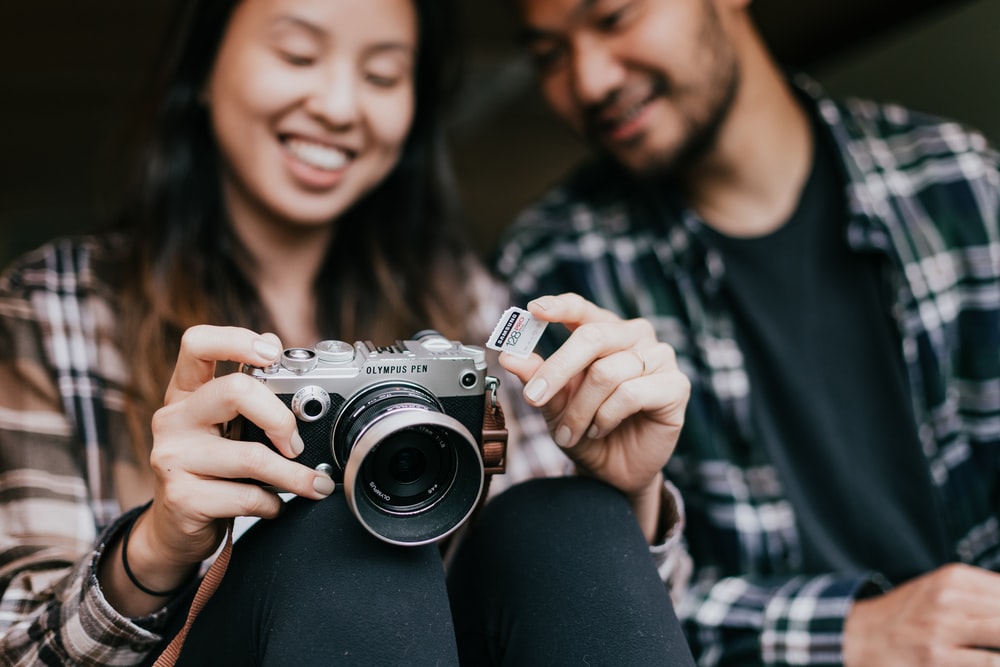


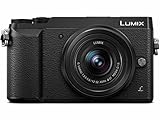



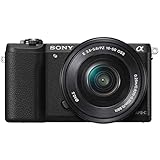



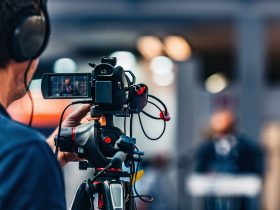
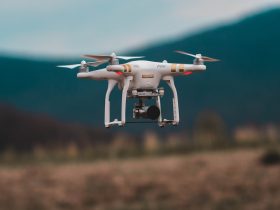
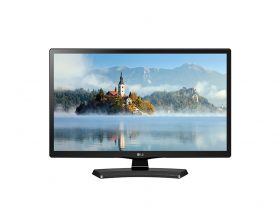
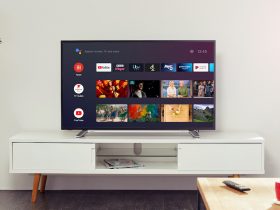
Leave a Reply